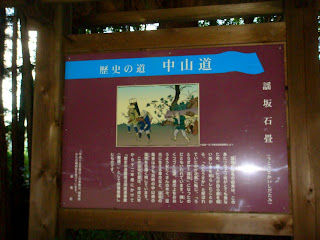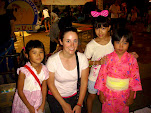Holy smokes! I can’t believe that tomorrow is October 1st! That will mark my two month anniversary of arriving in Japan and let me tell you, it doesn’t seem like two months at all. Don’t get me wrong, it definitely feels like I’ve been away from my friends and family for two months, but at the same time, my days here just fly by.
This is from outside of the JR (Japan Railways) Gifu Station
This week I finished up my 6 school tour, with a junior high school as my last stop. Current and former ALTs told me that elementary school would be the highlight of my job, I mean, how can you resist cute little second graders talking to you in Japanese at lightening quick speeds and they ALL want to be your friend (yes, it is the ego boost I recommend everyone get at least once in their lifetime!) So it is definitely a toss up between which I like better, JHS or elementary school.
I thought I’d give you all some more detail on the differences between my jobs at the two levels. In elementary school, I am the lead teacher, the homeroom teacher is present and will help with some English to Japanese translation, especially when I don’t know how to explain something in Japanese. So for 1st-4th grade, I plan and run all of the classes, but thanks to my predecessor, my predecessor’s predecessor, and the neighboring town of Kani, the lesson details are pretty well defined as to what the objective of each class will be. Let me tell you, that makes life a lot easier, but then at the same time, when you want to teach the kids something different or interesting, you have to find a way to fit it in. In 5th and 6th grade, I work more hands-on with the homeroom teacher (HRT). This usually includes dialogues, skits, and more interactive lesson planning between myself and the HRT. The benefit of working with these teachers, is that they usually have greater English skills because for each “unit” there is (there are 9 over the course of the year), there are 3 English classes per unit. However, I am only able to attend 2 of these classes per unit, so the HRT must teach the other English lesson.
Then there is JHS. At JHS, I am the Assistant English Teacher (ALT/AET…same thing) That being said, I don’t make the lesson plans and I don’t run the class. The Japanese Teacher of English (JTE) is the lead teacher and decides how to run each class and how we will teach new material to the students. I work with 7 different JHS teachers and how much they “use” me, (for lack of better word) depends on the material being covered and the personalities of the JTE. I’ve definitely played a different role in each JHS classroom, from being a CD player (repeat after me: “a big bomb was dropped on the city of Hiroshima”) to having discussions with the JTE in front of the class and then quizzing the students on the content of our conversations.
So which one do I like more? Great question and the answer is….it’s too soon to tell, but in the end, both JHS and ES have ups and downs, but together, they make a great mix.
Here is a quick interesting fact: October 1st is Census Day here in Japan. A nice lady came to my door on Monday with a packet, she said some words I didn't understant, and handed me a packet. Lucky for me, my supervisor said they would fill it out for me (although I later found an English translation online and it looked pretty easy). So there you have it, 2010 was a big year for me, literally, I helped add to the world population by being in two countries at once.
School Lunch! I finally remembered to take a picture of the school lunch today. Out of the 18 days of school lunches I had in September, I was only able to eat 4 full meals, due to the incredible amount of pork in each school lunch. So today was a treat, since there was chicken instead of pork! What you see, starting from top left to bottom right: green tea, sweet potatoes, a mixture: of carrots, green beans, eggs, chicken, and something else (this was eventually poured on top of the rice), milk carton, dry seaweed, rice, miso soup, and a mandarin orange. So there you have it, a school lunch in Japan.
The first photo is of tempura veggies that Mrs. Watanabe made and brought to my apartment last week, it was very yummy. I added my own twist to it, and dipped everything in ketchup inside of the sauce you are supposed to dip tempura in. Go me.
This weekend I'm heading to the neighboring prefecture (to the NE) of Nagano...Does that name ring a bell??? Yes, as in the Olympics Nagano. This winter I'm definitely going to make my way up to the actual resort that the Olympics were held at. Guess how much lift tickets are for one day on the weekend.....roughly $35-40. Yes, almost half the price as in the States and it held the Olympics, crazy I know! But returning from my tangent, the reason I'm going to Nagano Prefecture is to play in an ALT soccer tournament. There are 7 teams from the eastern region of Honshu (the largest island of Japan) and you compete in a modified 6 v. 6 match-up with 15 minute halves. I'm quite excited, except we are leaving my lovely apartment very early Saturday morning to make our first match.






















































